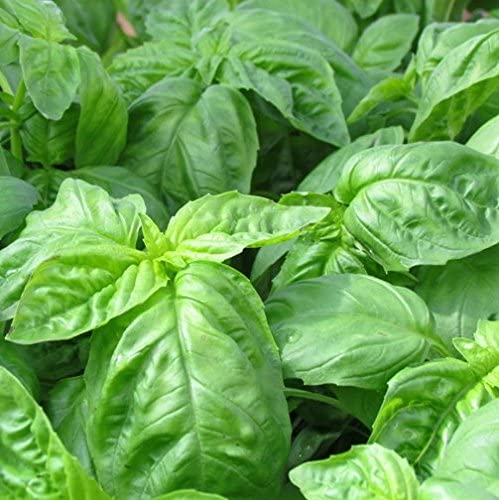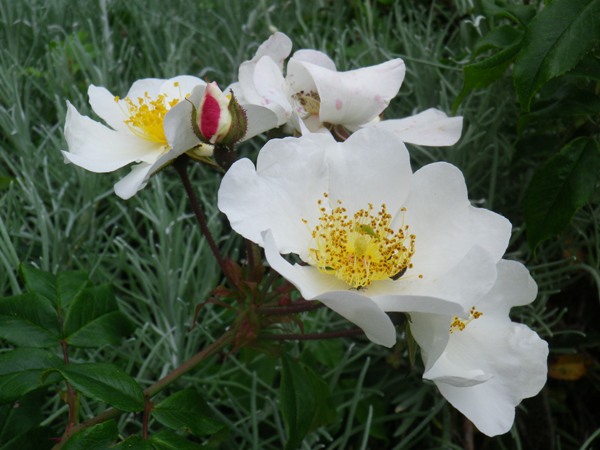
We begin our walk among the blooms that colour the end of spring and the beginning of summer from urban centers, and then enter the fields and finally head towards the coast.
The Large leaved lime (Tilia platyphyllos) that shade the city avenues, delightfully perfume the air with their hanging flowers, counteracting the unpleasant smell of city traffic, while the Pellitory of the wall(Parietaria officinalis) takes advantage of even the smallest cracks in the walls to grow luxuriant and flourish, scaring allergy sufferers.
From the balconies, the purple inflorescences of the Sage (Salvia officinalis) overlook, while the Capers (Capparis spinosa) prefer the old walls that surround the cities to begin their gaudy white-lilac flowering.
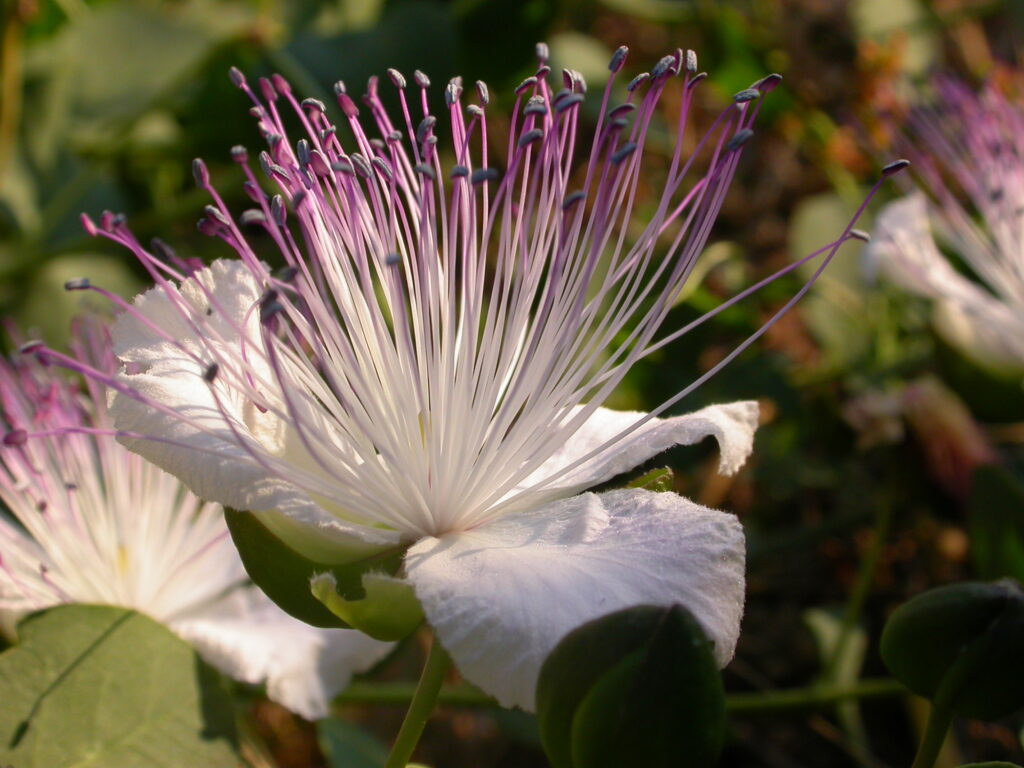
The yellow of the Gramineae characterizes many fields, where the fruits of the domestic grasses are now being harvested and will end up transformed into pasta and bread on our tables or in feed for farm animals. While the Wild oats (Avena fatua) and the Harestail grass (Lagurus ovatus) are waiting for June to bloom. Often the stems of Gramineae are used by the small Convolvulus cantabrica to rise towards the light and favor the pollination of its delicate pink flowers. The low White bottons (Anacyclus clavatus) on the other hand, prefer to open their white flower heads with a yellow heart remaining on the edges of the fields.
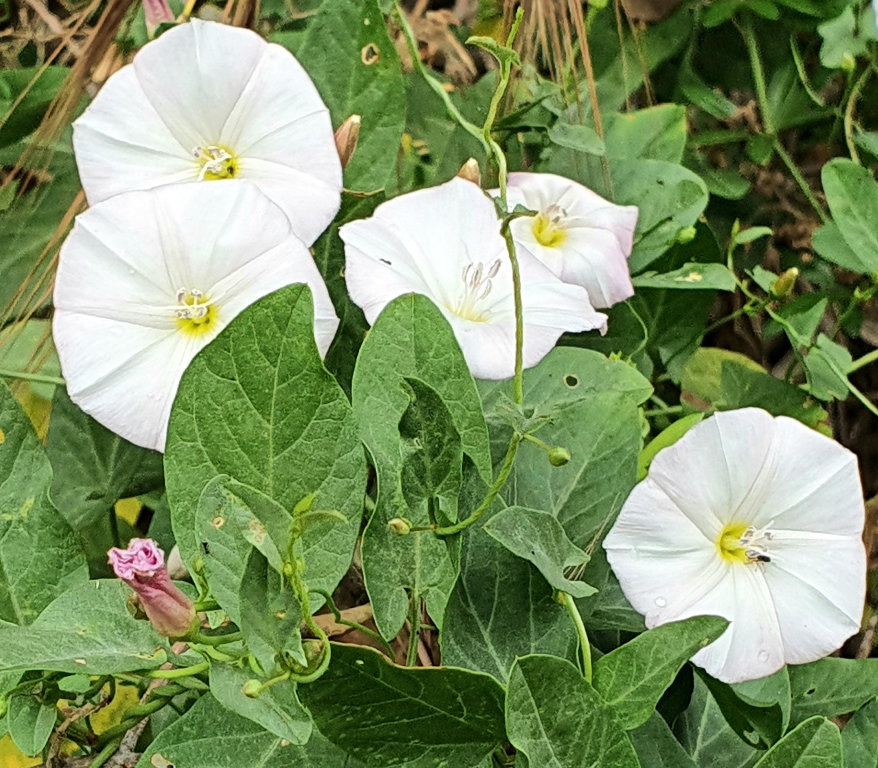
The small buildings, sometimes in ruins, that dot the rural areas offer the Chop-suey greens (Chrysanthemum coronarium) the opportunity to explode into many small suns that illuminate these forgotten corners. It is here that a Fig tree (Ficus carica) is hardly missing, a very rustic and long-lived tree. This species, whose complicated reproduction depends on the microscopic wasp Blastophaga psenes in fact offers us not a real fruit but a fleshy, pear-shaped infructescence, called syconium, inside which the tiny unisexual flowers are enclosed. This is also the favorite habitat of the now rare Melyssa (Melissa officinalis), a plant with yellowish flowers gathered in inconspicuous whorls, which is used for relaxing herbal teas.
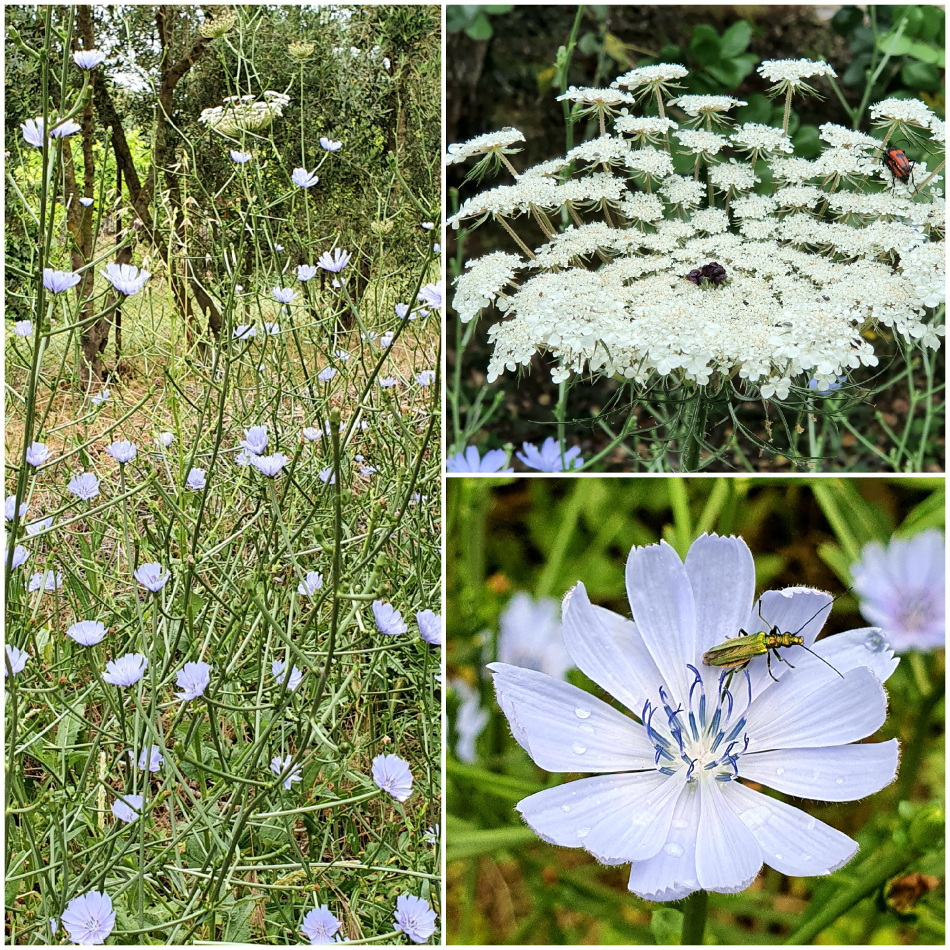
In fields left fallow or in unexploited pastures, shapes and colours mix as conceived by an impressionist brush. The white umbrella-shaped inflorescences of the Wild carrot (Daucus carota) and the dark red flowers of the Marian cardo (Silybum marianum) stand out against the different blues of the Bachelor’s-button (Centaurea cyanus) and Chicories (Cichorium intybus), which mix with the pinks of the wild pea (Pisum sativum), of the Perennial sweet pea (Lathyrus latifolius) and of the tiny Weld (Centaurium erythraea), which grows towards the edges of the fields, in the small spaces where the soil is more compact. It is always on the edges of the fields and on the edges of the roads that the Large Russian vetch (Vicia villosa) continues to grow luxuriantly and to bloom in violet-blue, offering itself to graze even when drought begins to be felt. While the variegated flowered Blue hound’s tongue (Cynoglossum creticum) with delicate blue flowers, uses the short hooked spinules of its small fruits to widen its distribution range, attaching itself to the hair and feathers of the animals that come into contact with it. Only the luckiest will be able to admire the deep pink flowers of the now unobtainable Italian gladiolus (Gladiolus italicus).
In the uncultivated fields and in the ruderal areas the bees collect the nectar for very special honey, foraging in the deep corolla flowers of the Viper’s bugloss (Echium vulgare) and of the Salvation jane (Echium plantagineum). This honey, of course, is called Viperine Honey.
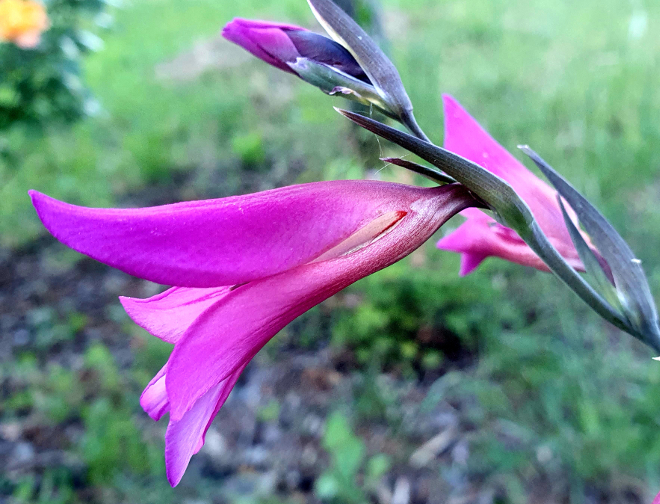
If our steps head towards mountain places we cannot forget to mention the flowering of the different varieties of Chestnut tree (Castanea sativa), a tree that has represented for many territories, up to the recent past, the only source of energy and food of the winter months. Those who visit the Garfagnana, in Lucca district, can still find in the chestnut groves the metati in which the chestnuts were placed to dry, which were then ground in water mills and can still hear the stories of the oral tradition that are an essential part of the “Culture of the Chestnut. “.
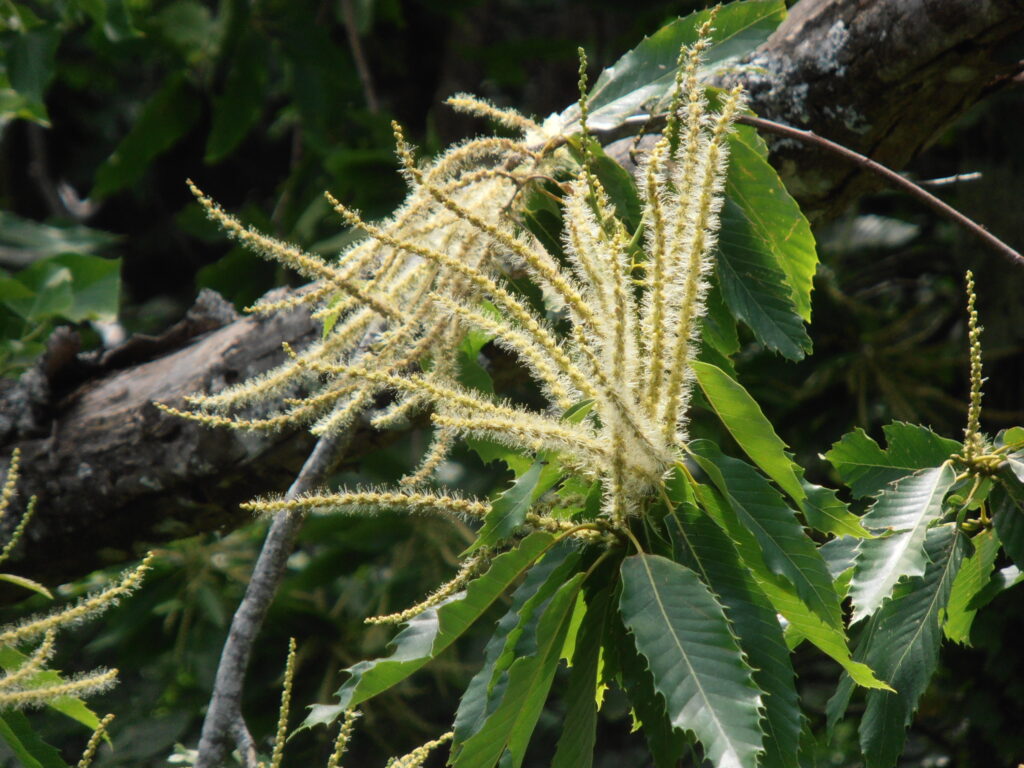
Looking up (and how could we do otherwise, given the size of these large trees?) We see above all the male flowers on the branches, gathered in erect whitish catkins; instead it is difficult to see the small female flowers which will then be much more evident when they “become” very good chestnuts.
Continuing our walk towards the sea and leaving the fields and heading towards the scrub, we will find, on the edge of the evergreen bush, the white of the large corollas of the wild rose that blooms last: the Rosa sempervirens. Moving on, we pass between the last yellow and fragrant flowers of the Spanish broom (Spartium junceum) and the less showy ones with the red stigmas of the Heather (Erica scoparia), to get to admire the small white flowers of the Myrtle (Myrtus communis) with its fragrant leaves.

In many Italian territories, such as the Sardinian-Corsican area and part of the eastern side of the peninsula, the low scrub can be interrupted by limestone rocks that the Aubrieta columnae colors with violet and the Sedum caeruleum runs through all the smallest cracks.
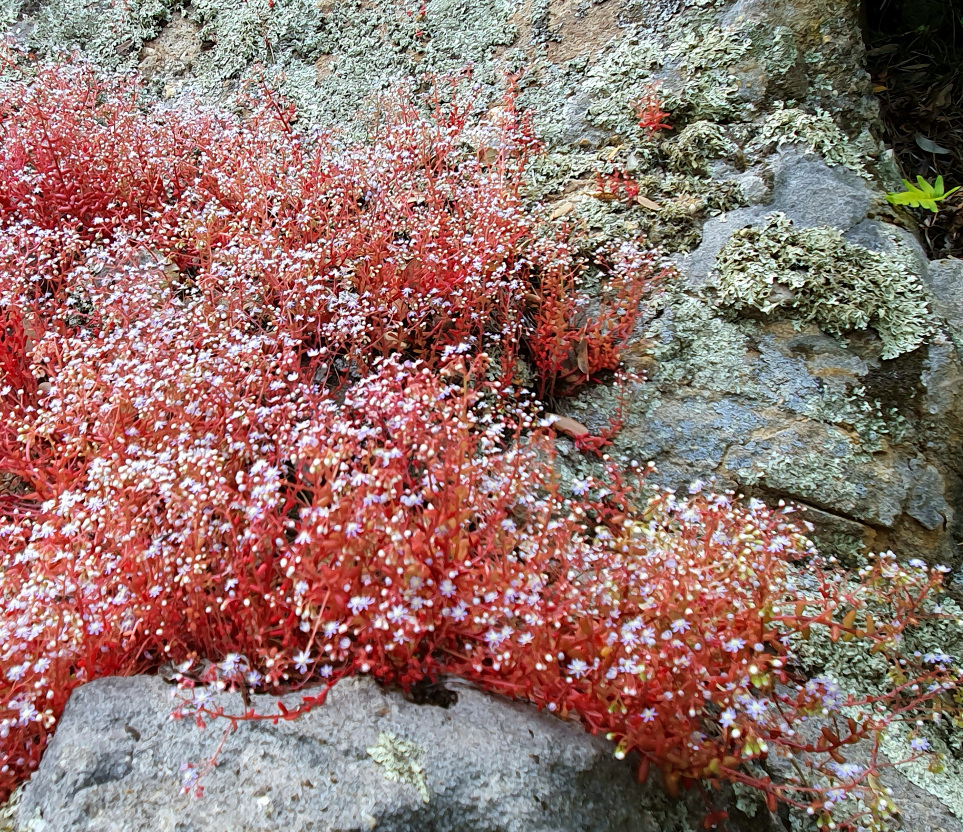
If our path crosses a small pond, the Tree of chastity (Vitex agnus-castus), widely used in herbal medicine for its therapeutic qualities, shows its purple-flowered panicles that protrude from the starry and fragrant leaves. While the Water crowfoot (Ranunculus aquatilis) colonizes the water mirror with the white brushstrokes of its flowers with a small, delicately golden heart.
Not far away groups of the Tamarisk shrub (Tamarix gallica) open the last pink flowers on the tops of their thin and flexible branches.
Our most common liana, the Traveller’s joy (Clematis vitalba), with subtly perfumed white flowers, grouped in inflorescences, climbs on the trees of the more mature wood, both evergreen and deciduous, which entrust to the wind both their pollination and the dissemination of seeds contained in achenes with long feathery ends.
In the evergreen woods in June the Holly (Ilex aquifolium) blooms, with small unisexual flowers, gathered in axillary bands, white or pink and almost sessile, from which those red drupes will develop that have made it elected as a tree of the Christmas.
Where the forest lets in the light, the fluorescent yellow flowers of John’s wort (Hypericum perforatum) illuminate the undergrowth.
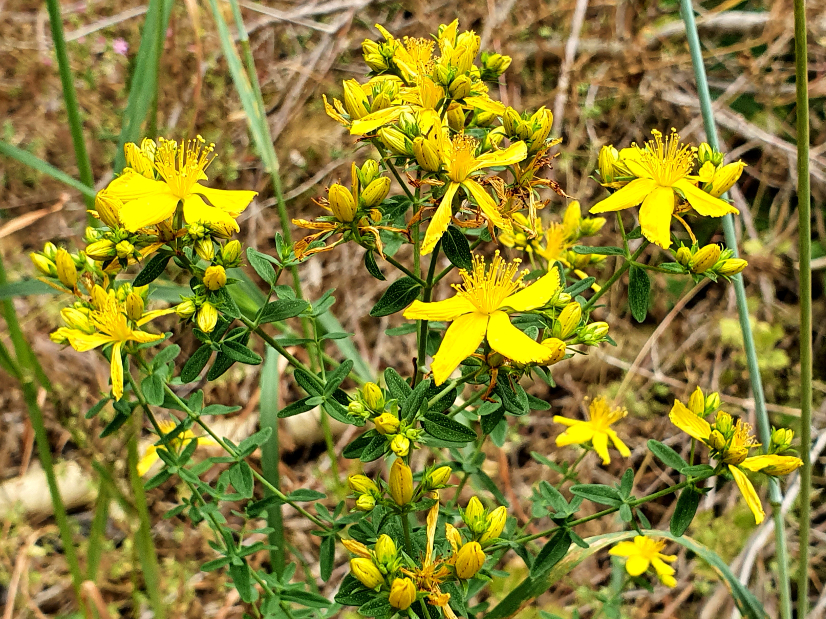
Leaving the woods we head towards the coast. Where we begin to glimpse the sea, in the sunny garrigue, the sulfur yellow flowers of the Helichrysum (Helichrysum italicum) form sparkling pads, while on the still mobile dunes two pioneer plants bloom: the Purple spurge (Euphorbia peplis) with red stems and inconspicuous flowers and the thorny maritime chamois (Eryngium maritimum) with hard purple flower heads.
Even the Cineraria (Jacobaea maritima) with its bunches of yellow flowers looks at the sea, but it does so from the top of the cliffs, on its erect stems, in the company of the Sea fern-grass (Lotus cytisoides) which instead prefers to stretch out among the cracks to form small cascades of yellow flowers.
And after having been lucky enough to be able to admire such a joyfully colored nature, we realize that we are a bit hot for the long walk. What’s better than a nice dip in the blue? Immersing yourself in search of other plants with surprising shapes and colors …
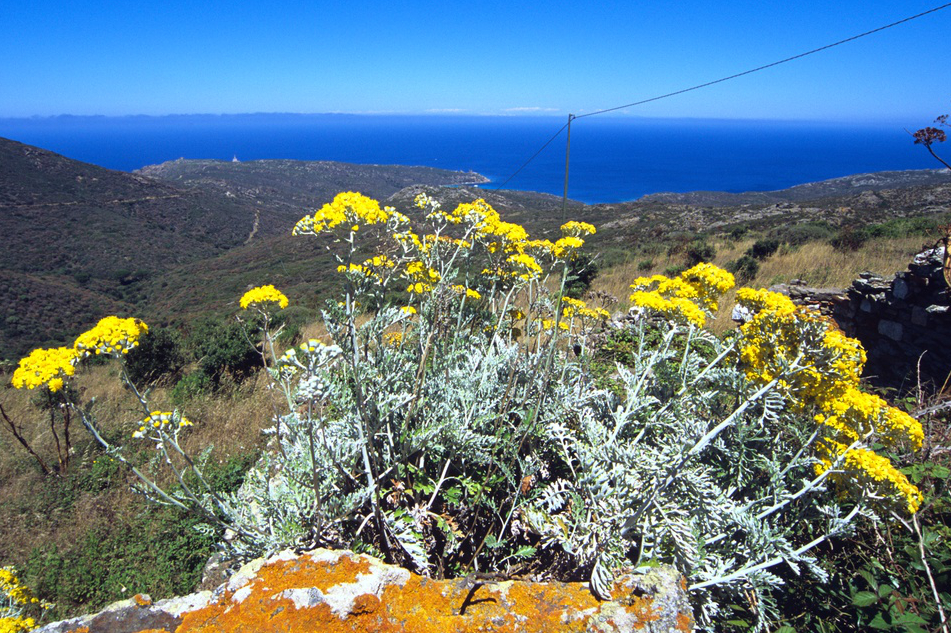
Author: Anna Lacci is a scientific popularizer and expert in environmental education and sustainability and in territory teaching. She is the author of documentaries and naturalistic books, notebooks and interdisciplinary teaching aids and multimedia information materials.
Translation by Maria Antonietta Sessa



